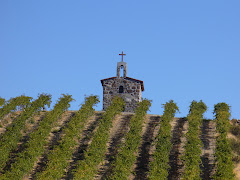 One of the most fascinating wine regions, to me, is the Loire Valley in France. There is such incredible diversity in style – from dry to sweet, still to sparkling, red, white and rosé, that it is always one of my favorite regions to recommend wines from, yet so many people don’t really know or understand the wines of the Loire. The region is defined by the Loire River, the longest in France, rolls from the East across the Northern portion of the country, through what many call “the garden of France.”
One of the most fascinating wine regions, to me, is the Loire Valley in France. There is such incredible diversity in style – from dry to sweet, still to sparkling, red, white and rosé, that it is always one of my favorite regions to recommend wines from, yet so many people don’t really know or understand the wines of the Loire. The region is defined by the Loire River, the longest in France, rolls from the East across the Northern portion of the country, through what many call “the garden of France.”Though most of us here in the States are somewhat familiar with the white wines (Sancerre, Pouilly Fume, Muscadet and Vouvray), there are red wines being produced there, such as the Cabernet Francs of the Anjou, and Pinot Noir from Sancerre. Yet to truly understand what goes on in the Loire, you have to have a sense of their geographical breakdown.
The principle areas within the Loire (from West to East) are:
1. Muscadet
2. Anjou-Saumur (comprised of the Anjou, Coteaux du Layon, and Saumur)
3. Touraine (comprised of the Touraine, Bourgueil and Vouvray)
4. Eastern Loire (comprised of the Pouilly-Fumé and Sancerre)
I want to first start with the Muscadet, simply because often thought of as a grape when in fact it is moreso a region of profound significance in the world of wine. Muscadet is the most western portion of the Loire, and borders the Atlantic Ocean. Its biggest boast is that its wines are perfect pairings with seafood. This region is known for one wine, Muscadet (made from the Melon de Bourgogne grape).
The Melon grape was first introduced into the area by Dutch traders in the 17th century, cultivating it as the base for their own style of Brandy known as brandewijn. The typography and proximity to the ocean made it ideal from growing and cultivating grapes.
There are nearly 32,000 acres of vineyards, covering rolling coastal hillsides, lying to the south and northeast of the city of Nantes. Though soil composition varies, the best vineyards reside in a combination of granite, gneiss and schist. One significant subregion is the Muscadet de Sèvre-et-Maine, which lies between the two tributaries, the Sèvre and Maine Rivers. Most of the best Muscadet wines originate from this region.
One significant point you will see on the labels of most Muscadet wine is sur lie, which denotes the fact that the wines remain in contact with the yeast lees for several months before bottling. Though most Muscadet sees stainless steel fermentation, the contact with the lees leaves some to misinterpret the flavors as being derived from newer oak. These wines have surprising depth of character and some can improve in the cellar for several years.
I have carried a couple of different Muscadet wines over the years, the Domaine Guindon, Chateau de la Ragotiêre, and most recently the Sauvion Muscadet de Sèvre-et-Maine 2007. A wonderfully vibrant, minerally, crisp white wine, Muscadet in general has a slightly nutty, salty characteristic that one would connect instantly with the sea. Perfect for salads and seafood, Muscadet is a wine you should really explore.











No comments:
Post a Comment